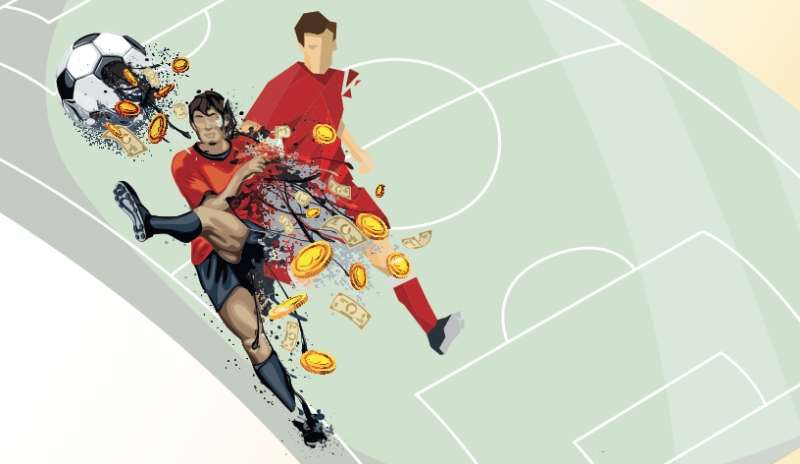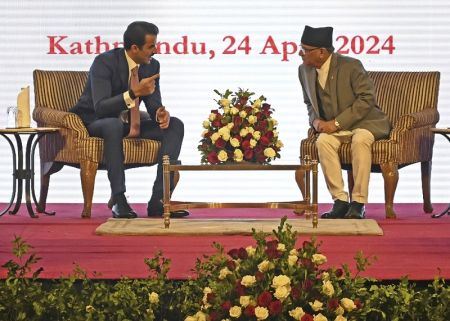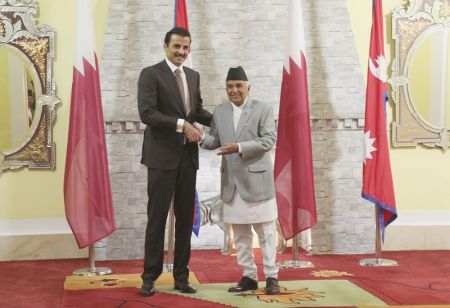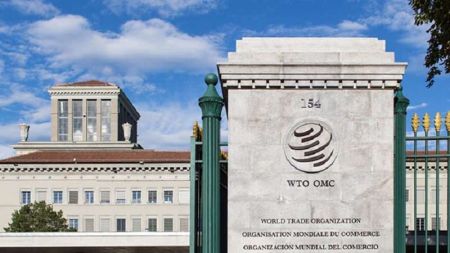While Nepali football has gone through some tumultuous times, the income of the current crop of footballers is a promising sign for the sustainability of football as a profession in the country.
Forbes magazine recently released the list of the highest-earning athletes for 2018. Lionel Messi, Argentine football sensation ranked second with USD 111 million while Floyd Mayweather, US boxing champion, topped the chart with USD 285 million. Footballers have dominated the list this year with three footballers among the top five (Lionel Messi 2nd, Cristiano Ronaldo 3rd, and Neymar Junior 5th). Cristiano Ronaldo, former Real Madrid superstar had topped the chart for two continuous years in 2016 and 2017.
Sportskeeda too published a list of the top five earning Indian footballers of the Indian Super League 2017-18. According to the article published by the Indian sports website, Indian skipper Sunil Chhetri leads the chart with earnings of INR 15 million. He is followed by his national teammate Jeje Lalpekhlua, on INR 13 million.
Since the advent of televised sport, football has gradually grown into one of the largest television products in the world and commands immense viewership. This viewership ensures teams make heavy sums of money from television rights. The increased influx of money is then funneled into acquiring players. In the English Premier League, the average footballer’s salary until 1961 was just £20 a week; it has increased to around £33,868 today. Previously, heavy outlay on players was limited to European clubs but now the expenditure has increased in the global context as well. The emergence of the Chinese Super League has precipitated this growth, with several talented players moving to China for exorbitant amounts of money.

The Nepali Context
Kiran Chemjong, a member of Nepal’s national football team believes he would have ended nowhere if he had not joined the game and is thankful for the game and its followers. He thinks people have a misconception about the economics of Nepali football. He says individuals think football players earn meagre incomes, which is not the case. According to him, football players can make more income in Nepal than people from other professions. Chemjong informs an average Nepali footballer bags around Rs 100,000 monthly playing locally.
In contrast, Sanjeev Mishra, league director at All Nepal Football Association (ANFA) says the situation for football players in Nepal is tough. League tournaments provide good income but the football association has failed to organise them in the recent past. Further, he informed ANFA has resumed the halted league and is optimistic that it will help sustain the local players.
Much like other parts of the world, football is immensely popular in Nepal. The record sales of football jerseys in Nepal during the recently held FIFA World Cup 2018 in Russia are a testament to the sport’s popularity.
At one point, the future of Nepali football was uncertain. In 2015, the jobs of Ganesh Thapa, former president of ANFA along with Sandip Rai and Sagar Thapa, crucial national team players, were terminated on financial misconduct and match-fixing charges respectively. This incident cast a dark shadow on the sustainability of football in the country. However, against all odds, the Nepali national team made a breakthrough in 2016 by winning their first international trophy. The team won the 2016 Bangabandhu Cup in Bangladesh and the AFC Solidarity Cup in Malaysia in the same year.
Amidst this resurgence, a pertinent question remains. Just how much do Nepali footballers earn? Below are five of the highest earning Nepali footballers, in no particular order.


Anil Gurung: The former national team striker caught the public eye after being linked with UEFA Champions League winners, Chelsea Football Club. He joined Shillong Lajong FC for Rs. 6.3 million on October 30, 2009, and became the highest earning player in the country. He was recently contracted by Three Star Club and was a regular member of Manang Mardasangdi Club previously. Gurung inked multiple endorsement deals in 2017 and retired from the national team in November of the same year. According to him, his income tally for 2017 including salary, allowances, endorsements and awards, combined to Rs. 5.9 million.

Bimal Gharti Magar: The youngster burst into the limelight after scoring a late equaliser against Pakistan in the 2013 South Asian Games. He is a prominent member of the national team and is currently associated with Chasal Football Club. Magar has attracted many endorsement offers such as LIC Life Insurance Company, Xtep, Boost and OXY men face. Magar chose not to disclose the details of his earnings. However, according to reliable sources, his earnings in 2017 amounted to Rs 2.5 million.

Bharat Khawas: The captain of the National team missed the Asian Games due to injury and is currently playing for Nepal Army Club. Talking about the financial aspect, he says players associated with the departmental team earn less but have secure earnings even after retirement. Khawas previously earned Rs 80,000 monthly at Three Star Club. At present, he receives a monthly salary of Rs 35,000 from the army team and Rs 15,000 from ANFA and an additional USD 14 during international duties. He informs his combined earnings from 2017 were Rs 1.7 million.

Kiran Chemjong: The player said he was previously paid Rs 75, 000 monthly while playing for Manang Marsangdi Club in Nepal. He earned more from T.C Sports Club and Minerva Punjab FC. The earnings from the national team along with a plethora of awards and prizes have kept him satisfied. Despite not signing any endorsement agreement in the previous season his earnings reached Rs 5 million from all the sources combined.
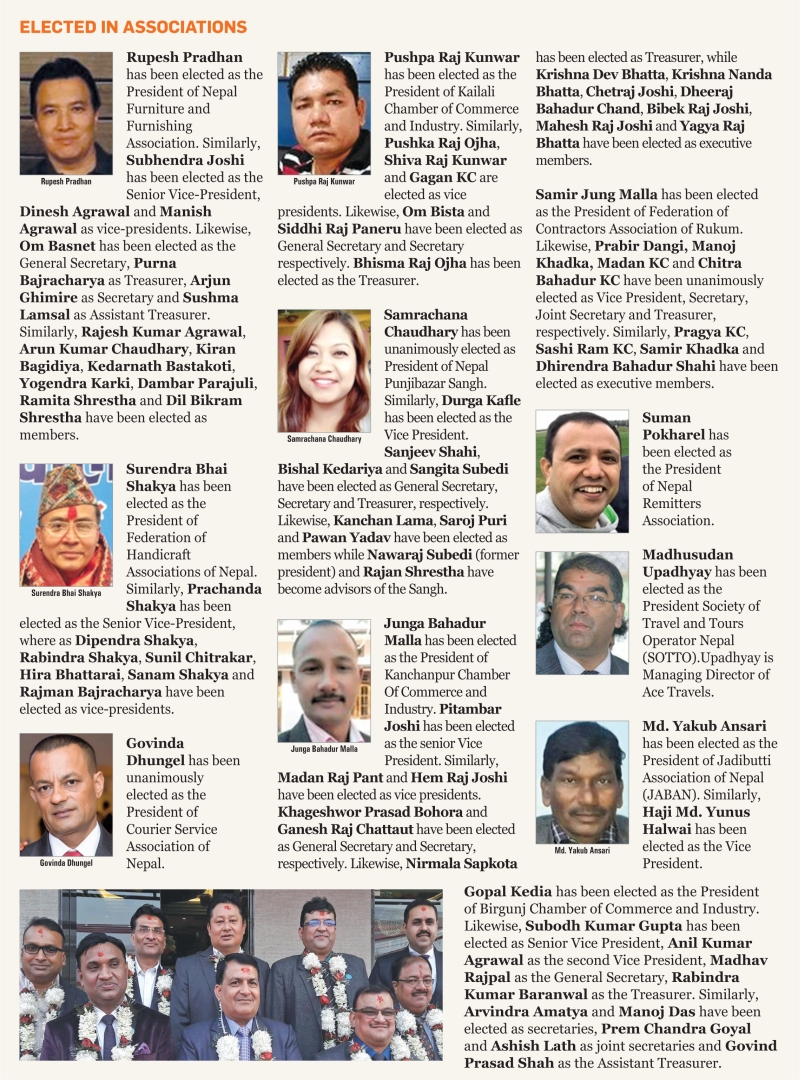
Rohit Chand Thakuri: On 9th October 2013, he became the highest-paid player in the history of the Nepali domestic league after signing a Rs 1, 50,000 monthly deal with Machindra Club. His is currently valued at UKP 180,000 in the football market. He is contracted with Persija Jakarta, a Liga 1 (Indonesian Top Flight) team (since 2014) and has been earning generously. He says he received around Rs 6 million from the Indonesian club during the 2017 season and had made no endorsement agreements. He receives Rs 15,000 monthly from ANFA and additionally USD 14 during international duties. His gross earnings in 2017 amounted to around Rs 6 million.


